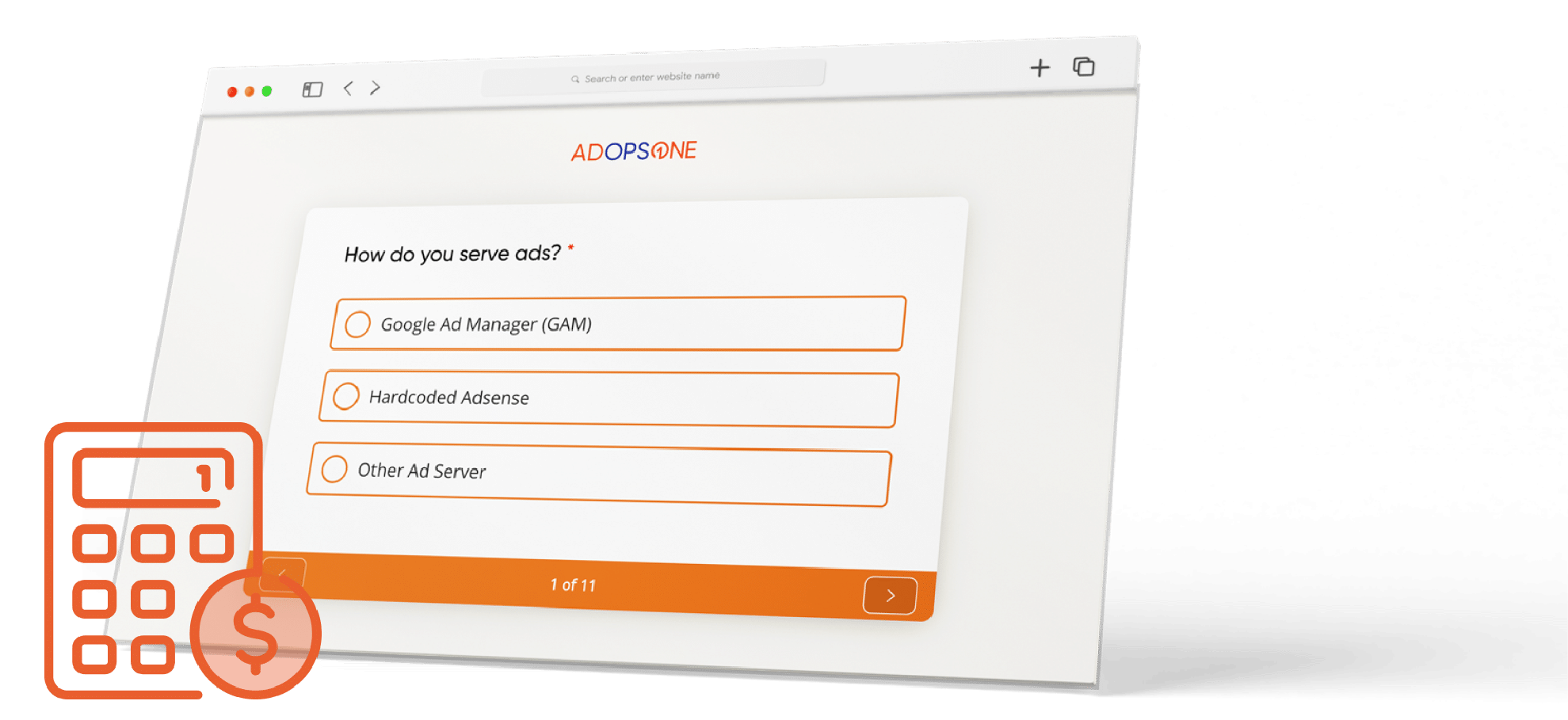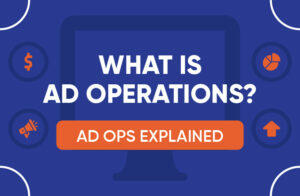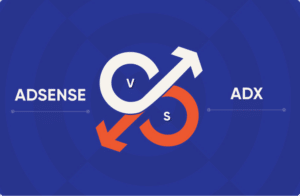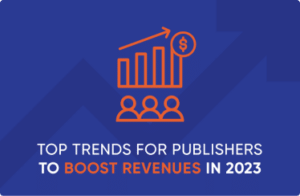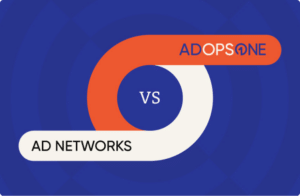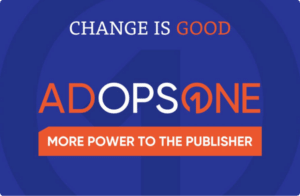Monetizing content is just the beginning of a publisher’s journey. Making sure that their ad revenue does not dip with time is equally important.
For instance, several large publishers have reported stagnant or declining revenues in the first quarter of 2023.
Part of the reason why publishers struggle to optimize their ad revenue lies in the complexity of the increasingly fragmented digital advertising landscape.
Publishers have to deal with several factors such as multiple ad networks, varying ad formats, and constantly changing ad placement strategies in the hopes of continuously generating healthy revenue from their content. To make things worse, the use of software such as ad blockers further dents ad revenue for publishers.
Ad revenue optimization solutions are strategies that help publishers overcome these challenges. With that in mind, let’s delve a little deeper into the general concept before unveiling our picks for the 10 best ad revenue optimization strategies for publishers.
Table of Contents
- What Is Ad Revenue Optimization?
- 10 Ad Revenue Optimization Strategies for Publishers
- AdOpsOne—The Ultimate Solution for Ad Revenue Optimization in 2023
What Is Ad Revenue Optimization?
Ad revenue optimization is the process of maximizing the revenue generated per user from displaying ads. Each optimization technique boils down to analyzing and optimizing different factors that impact ad performance—such as ad placement, ad format, ad quality, targeting, user experience, etc.
The bottomline here is to drive higher engagement and clicks through targeted and better quality ads, which can generate more revenue per impression.
By delivering ads that are relevant, engaging, and non-intrusive, publishers can create a win-win scenario for both themselves and their users.
10 Ad Revenue Optimization Strategies for Publishers
Here are 10 strategies publishers should consider adopting (if they haven’t already) to maximize revenue and stay ahead of the curve:
1. Server-Side Header Bidding
Header bidding is a programmatic advertising technique that has seen a steep rise in adoption thanks to its ability to squeeze out extra revenue for publishers. More than 12% of the top 10,000 websites in the world measured by monthly traffic use header bidding.
The technique’s effectiveness lies in its ability to work with multiple header bidding partners at once, resulting in increased competition and a more transparent auction process. It does this by creating a unified auction across all demand partners. This means that all bids are compared at the same time, rather than in a waterfall sequence, wherein ad inventory is passed down from one ad network to the other in descending priority order until all impressions are filled. This allows for an equal chance for all demand sources to bid and win the auction.
Header bidding further consists of two types—client-side and server-side. With server-side header bidding, publishers don’t need to rely on client-side scripts, resulting in faster page loading times and better user experience (UX).
The downside with using header bidding is that it can be complex to set up, manage and monitor. This is why several publishers turn to expert third-party service providers such as AdOpsOne to manage their header bidding.
AdOpsOne not only takes care of installing the header bidding javascript code on publisher websites, but also provides an intuitive dashboard to simplify header bidding strategy tracking.
2. Optimize Ad Placement and Size
Ad placements impact viewability, which in turn can have a direct bearing on engagement and click-through rates (CTRs). This is why optimizing ad layouts and sizes to make ad units more viewable goes a long way in improving revenue.
For instance, leaderboard ads, which are usually placed at the top of the page, typically garner more user engagement and, as a result, tend to have more ad inventory available.
On the other hand, the 250×250 or square ad size, which is usually placed in smaller spaces, often doesn’t perform as well and has more limited ad inventory.
Publishers should continuously experiment with placements and sizes to zero-in on the ones that work best for them.
3. Enable Ad Refresh
Ad refresh refers to the practice of reloading ads on a web page after a user has spent a certain amount of time on the page.
Ad refresh ensures that users aren’t left viewing static and stale ads and are instead presented with new and targeted ads based on their browsing behaviors. This, in turn, increases user engagement resulting in better ad revenue.
To implement ad refresh on their websites, publishers need to focus on three factors:
- Firstly, they need to set the ad refresh time to an appropriate interval that balances the need for new ads with user experience.
- Secondly, publishers should ensure that the refreshed ads are relevant to the user’s browsing behavior, interests, and demographics.
- Finally, publishers should test different formats, placements, and designs to identify what works best for their audience.
AdOpsOne’s high viewability refresh (HVR) feature does all this and more, with minimal effort required from the publisher’s side. It intelligently targets banner ads that have been viewed for more than 30 seconds, enabling them to be refreshed up to six times running in a loop. Publishers can even control the time delay between each refresh.
4. Monitor Ad Performance
By keeping a keen eye on ad performance, publishers can identify any issues or opportunities for improvement. For instance, a significant drop in CTRs could mean that the ad creative needs some adjustments or that the targeting is off.
On the other hand, a sudden increase in ad impressions might be the result of a rise in traffic or a shift in user behavior. Knowing this information can help with ad revenue optimization by maximizing ad placement and improving ad targeting.
AdOpsOne’s Genie is a platform that makes this process hassle-free. It leverages AI to automatically detect issues such as declining eCPMs or CTRs and suggests solutions that publishers can implement to fix these issues.
5. Use Audience Segmentation
Audience segmentation involves dividing an audience based on their demographics, interests, and behavior. For example, audiences can be segmented into age groups, gender, location, interests, and browsing history.
By doing so, we can create targeted ads that are more likely to resonate with specific segments, resulting in higher engagement rates and conversions.
To implement audience segmentation, use data analytics tools to analyze the audience and identify patterns in their behavior. Third-party data providers such as Google and Facebook can also help fill in any data gaps. After segmenting the audience, create ad campaigns that are specific to each segment, thereby increasing the likelihood of conversions.
Another useful tool for audience segmentation is Opinary. It uses contextual polls integrated within a webpage’s content to build lookalike audiences that publishers can target. Being GDPR compliant, Opinary presents an ethical and privacy-safe way of building audience segments in a cookieless world.
6. Work With Ad Revenue Optimization Experts
Partnering with ad revenue optimization experts can lead to valuable insights on strategies and tactics that can help increase ad revenue.
Such experts have the industry experience and knowledge to identify areas where ad revenue can be improved, such as ad placements, ad sizes, ad layouts, and ad formats. They also usually have good working relationships with several trusted demand partners, saving publishers the trouble of having to experiment with numerous ad networks in hopes of getting better eCPMs.
7. Utilize Multi-Ad Formats and Sizes
Using only one ad format or size can lead to a phenomenon known as “banner blindness”, where users start ignoring or overlooking ads altogether. By using different ad formats and sizes, publishers can capture a wider audience’s attention, creating more opportunities for engagement.
Implementing this strategy involves experimenting with different formats and sizes to find the best mix that works for the audience. Data analysis tools can also help in determining which ad formats and sizes are resonating with the target audience.
By diversifying ad formats and sizes, publishers can reach new audiences, increase engagement, and ultimately boost revenue. So, avoid picking a single format or size and focus on experimenting, analyzing, and optimizing ad strategies for maximum success.
8. Update Ads.txt File
The US ad industry lost an estimated $81 billion to digital ad fraud in 2022. The ads.txt (authorized digital sellers) file is a simple, yet crucial piece of code that helps advertisers verify who is authorized to sell their digital inventory. This, in turn, goes a long way in fighting ad fraud.
By regularly updating the ads.txt file, publishers can ensure their website is only working with authorized sellers. This can help reduce losses to fraudsters who are constantly coming up with new scams to gain access to ad inventory.
The ads.txt file can be updated by logging into a site’s content management system (CMS) or hosting account and locating the ads.txt file in the root directory. For those not familiar with finding their way around a CMS, it’s best to let a dedicated ad ops team or web developer handle the process.
9. Use A/B Testing
A/B testing involves testing two versions of an ad to see which performs better, and then continuously optimizing based on the results. By comparing the performance of two ads that are nearly identical, publishers can gather valuable data that can help guide their advertising strategy.
To implement A/B testing, publishers need to create two versions of an ad—one with a variation, such as a different color scheme, headline, or call to action (CTA). These ads are then run simultaneously, with the performance metrics for each ad being tracked and compared. Based on the results of the testing, publishers can then make changes to their ad strategy and implement the changes that deliver the best results.
10. Outstream Video Ads
Outstream video ads are ads that play outside of a video player. By comparison, instream ads play while a user is watching a video, interrupting their viewing experience.
The biggest advantage of outstream ads is that they don’t require a video player. Publishers don’t even need to have any video content on their page to display outstream ads.
What’s more, outstream ads are activated as a user scrolls to their location, stopping once they scroll away. Also, unlike instream ads, outstream ads are automatically muted, so that users aren’t disturbed by the audio unless they specifically wish to listen to it.
A drawback of outstream video ads, however, is that they’re only available for mobile devices. Moreover, they also tend to be intrusive and distracting. If, however, publishers are still interested in outstream ads, they should look to partner with a good mobile ad network that can ensure only high-quality ads are placed on their website.
AdOpsOne—The Ultimate Solution for Ad Revenue Optimization in 2023
With increasing competition and changes in consumer behavior, having the right tools and strategies in place can make all the difference.
That’s where AdOpsOne comes in.
With our cutting edge offerings—AdOpsOne Dashboard, Genie AI, and Managed Services—we act as publishers’ trusted ad revenue optimization partners. Our data-driven, AI-enabled approach ensures that our partners are always ahead of the competition.
Get in touch with AdOpsOne today to learn more about how our ad revenue management and optimization strategies for publishers can help increase their eCPM.

